|
Yesterday I had a client come into the salon and she brought a friend with her, her friend is a current student at Taylor Andrews Academy of Hair Design, the same cosmetology school I attended. She has only been attending few months, she barely got onto the floor (which means out of the class room and taking clients). I asked her how she was enjoying her experience and she said overall, she liked it.
Somehow the topic of Taylor Andrews Hair Show came up. The Taylor Andrews Hair Show is an annual event that showcases the students creative and technical skills they have learned. Every year the owner of the company will pick a theme, for example the year I attended the theme was famous artists. The students are put into groups and given a subcategory to inspire them, mine was Michelangelo. This year’s theme was Graffiti the World with Love. The profits went to benefit The American Foundation for Suicide Prevention. Sounds wonderful! In this strange time that we live in it was a great concept for bringing the world together; metaphorically and artistically, while giving to an organization that is very much needed. Let me start by saying that I was unable to attend the show, but I wish I was able to. I was able to see photos and videos from the show and I found it interesting to say the least. Let me diverge for a moment before I dive deeper into the Taylor Andrews Hair Show. During the New York Fashion Week in 2016 Marc Jacobs debuted his newest collection that had hand-dyed wool dreadlocks. The pale piles of faux hair were explained by hairstylist Guido Palau to be inspired by the Club Kids, Boy George, Lana Wachowski, and other select references. The show created a large debate on whether the look was a show of appreciation for the style or was it a form of cultural appropriation. Marc Jacobs did say his intent was not to offend anyone, he took his references and was trying to create art from his inspirations. He did apologize if it had offended people.[1] For the last few Halloween seasons there has been a lot of conversations or rather debates of what not to dress up as. [2] The number one DON’T is to dress up as anything other than your culture. The reason being is because it can be offensive to other cultures by treating their culture as a costume or ‘play time’ rather than respecting the culture and the deep, rich history. Back to the Taylor Andrews Hair Show. With all sorts of articles and magazines speaking up against cultural appropriation it seems like a pretty risky idea to have a hair show showcasing a variety of cultures through the medium of wardrobe, hairstyles, and makeup. Let’s take a moment to see what cultural appropriation means. The definition of appropriation is ‘the action of taking something for one’s own use, typically without the owner’s permission ‘. Cultural appropriation is a concept in sociology that defines as, ‘the act of taking or using things from a culture that is not your own, especially without showing that you understand or respect this culture’. Halloween costumes, in the wrong context could be unknowingly cultural appropriated. The Marc Jacobs fashion show, is a gray area. I personally believe that he was using his influences and knowledge from his references (Boy George, Club Kids, etc.) and trying to represent and create his art without the intent of being offensive. The Taylor Andrews Hair Show also seems to be a gray area. I’ve attached some photos from the show, so you can see and form your opinions. In the show they had many groups showcasing a different continent, Africa, North America, Antarctica, etc and they showcased the theme Graffiti the World with Love. The hair and outfits seemed strange and vague. Within each continent there are so many vast amounts of cultures that it seemed to be an impossible task to represent the types of love and culture within each continent. Looking at the photos and videos it reminded me of the Broadway musical The Producers. There is a musical number in the show called Springtime for Hitler. It is a generalized (and hilarious) representation of what Germany represented or looked like during World War 2. If you haven’t seen this musical it is supposed to be offensive (watch the clip below). With the Taylor Andrews Hair Show did it ‘Graffiti the World with Love’? Or was it showing generalizations of different continents? I understand the concept and the intent behind the show, they were trying to come from a place of love and bringing our world together. The question then, was the Taylor Andrews Show a form of cultural appropriation? By definition yes. They grouped a variety of cultures into stereotypes, and generalizations for their performance art. Was the show intended to be offensive? Absolutely not. They intended to come from a place of understanding, hope, love, and connection, however they missed the mark. The intent behind the show was not to offend, but to showcase their art, and to come together with love. I personally feel they did not represent any cultures properly, and the parts that showed culture was just gross generalizations and stereotypes for entire continents, I will say they hit the mark on what fantasy and whimsical hair is. I truly hope that the staff of Taylor Andrews and all cosmetology schools us this experience to really understand the rich history and dynamic behind different hair, makeup, and fashion throughout the world. There are books like Fashion in Hair by Richard Corson that shows the evolution of hair throughout the world in the past 2000 years. Also, all of us hold in our hands unlimited knowledge, I’m taking about our smart phones and Ipads. I know that all Taylor Andrews students get an Ipad when they enroll. Use that tool to learn about hair from different countries. Take five minutes to read articles on why people from different race, class, and genders get offended by generalizations about their hair; why women with curly hair hate people touching their hair, the history behind Geisha’s up styles and make-up, where and why different Africa tribes paint their faces in various tribal patterns. I personally know the owner of Taylor Andrews and his family, they run a good business and have a fine chain of cosmetology schools, he’s a wonderful man with good intentions. I hope that he will lead his staff to educate the students to understand more about the sociological aspects of cosmetology. Until next time. DJH
The photos used are from the Taylor Andrews Academy Facebook page. https://www.facebook.com/TaylorAndrewsSchool
Barlett, L. (2015, October 29). Halloween Costume Do's and Don'ts. Retrieved from Westworld: http://www.westword.com/arts/halloween-costume-dos-and-donts-7281334 Wagoner, M. (2016, September 21). The Dreadlocks Debate: How Hair Is Sparking the Conversation of the Moment. Retrieved from Vogue: https://www.vogue.com/article/dreadlocks-hair-debate-moment [1] (Wagoner, 2016) [2] (Barlett, 2015)
0 Comments
This is a difficult topic dealing with domestic abuse and change in appearance. There is a video which I encourage to watch but it is heavy. This has been emotional to write about, I have found myself in tears because of the research and stories I read. I haven chosen to leave out the graphic details I came across. I hope you find this information informative and insightful. Thank you.
This past summer I found myself mindlessly flipping through Facebook, like one does when trying to make the time pass. I came across a video, the video is an ad campaign from Bangladesh. It shows the heartbreaking consequences of domestic abuse and I immediately teared up while watching it. Before continuing on please take two minutes and watch the video. According to the United Nations Statistic Division 1 in 3 women will have experienced physical or sexual violence at some point in their lives. Violence against women is seen all over the world percentages of women who have experienced intimate partner violence in their life time ranges anywhere from 6% to a staggering 68%. North America falls in 7-32%, Africa is 6-64%, Asia 6-67%, Europe 13-46%, Latin America and Caribbean’s 14-38%, and Oceania being the highest of 17-68%. The reason why the range in percentages are drastic is because less than 40% of women in most countries report or sought help, and less than 10% sought help from the police.[1] I spent a great deal of time reading stories true stories from the Domestic Violence Resource Centre Victoria. Woman have shared their stories to this organization to help others suffering from domestic violence. I was unaware of some of the ways people would use hair to control women. From pulling hair in violent fights, to holding women down by their hair while raping them, or to using women's hair to control them emotionally. I was reading a story from this woman Maria, she says her controlling partner wanted her to look like his best female friend, he wanted her to look like her, dress like her, act like her. There are so many stories from woman who have survived abusive situations and relationships and I highly encourage reading their stories. They can be found at http://www.dvrcv.org.au/stories. What that ad from Bangladesh shows us and women’s domestic abuse stories show us is what we’ve been seeing for years on television and movies. A drastic haircut shows emotional shifts, whether it’s the Disney movie Mulan where the lead female (Mulan) changes her appearance to look like a man. We see characters responding to traumatic events like in the movies Gimme Shelter and Frida where the leads cut off their hair because of abuse, trauma, and depression. These are movies, what can haircuts do for real people though? According to therapist Rachel Kazez, a haircut can be an important part of the healing process. If a woman is involved in an abusive relationship where the spouse is controlling how she can wear her hair it can be healing and liberating for the woman to change her hair once out of the relationship. Or in a sexual assault someone’s hair might be used to hold them down, in the healing process regaining control over your own hair can be very powerful.[2] Looking at the statics it is overwhelming to see how common domestic abuse. Working in a salon I have heard stories surrounding divorce, loss of jobs, death, marriages, having babies, etc. I have cut hair off for women after breakups or a loss of a loved one. I have never experienced a woman asking me to cut her hair off because of domestic abuse, but in my 10 years behind the chair and the hundreds of clients to sit in my chair I wouldn’t be surprised if I unknowingly helped a woman out who has suffered domestic abuse. In this research I came across a program called CUT IT OUT, it is sponsored by the Professional Beauty Association (PBA), this program is to help mobilize salon professionals and others in the fight against domestic abuse. Building awareness and training for salon professionals to recognize warning signs and safety for clients and colleagues. I am scheduling my training with this organization to help recognize the signs of domestic abuse, I plan on organizing a fundraiser for this organization as well. A woman's identity and beauty is found in her hair and no one has the right to take that power or her confidence away from her. Strong women in my life have been affected by domestic abuse and I stand with them all to end the abuse. No woman should ever feel scared to have the hair they want. If you are interested in learning more about the statistics please see the link below. [1] (United Nations, Violence against women. 2015 https://unstats.un.org/unsd/gender/chapter6/chapter6.html)
[2]
Imagine New York City forty years ago. The fashion trends at the time were very unique, bellbottom pants, bold color choices, pant suits, strong pattern choices. The hair was all over the place, this being a liberated time the hair was from a natural picked out style to create afros, to long straight hair as seen on Joni Mitchell and Cher, and of course the iconic feathered layered looks seen on Marie Osmond and Farrah Fawcett. The hair color was a range from bombshell blondes to dark brunette hair, it was a fun exciting era for hair and fashion.
As I’m sure you know the fashion industry has a huge influence on hair, they have a symbiotic relationship where one influences the other. Hair and fashion artists work very close on photo shoots and runway shows to create the latest trends in hair and fashion. Although sometimes there are unexpected influences that shift the trends in hair. The Bronx, July 29, 1976. David Berkowitz, son of Nathan and Pearl Berkowitz shot two teenage women, Donna Lauria and Jody Valenti while they were sitting in Valenti’s car in front of Laura’s home. David Berkowitz shot these women with a .44 caliber gun killing Laura and only injuring Valenti. Three months later Berokwitz struck again, shooting two teenage girls, leaving one as a paraplegic. January 1977, Berkowitz shot Christine Freund and her fiancé John Diel, Diel suffered minor injuries, but Freund died hours later in a nearby hospital. Berkowitz became known as ‘The .44 Caliber Killer’, he continued his killing spree by taking the lives of Virginia Voskerichian while she was walking home from class. A month later he kills Valentina Suriani and Alexander Esau, Berkowitz leaves a note at the crime scene where he calls himself, ‘Son of Sam’. He becomes known as the Son of Sam Killer. His final victims were Stacy Mokowitz and Bobby Violante, which occurred in Brooklyn in the early hours of July 31, 1977, one year after his first attacks. Moskowitz died but Violante survived but becoming blind in one eye and losing most of his vision. In August 10, 1977 the police arrested Berkowitz and he confessed to the killings, David Berkowitz is still alive serving his multiple life sentences in Shawangunk Correctional Facility in Wallkill, New York. You’re probably wondering, “What does a serial killer have to do with hair?” All of David Berkowitz’s victims were women with brunette hair, most of which was long in length, expect for Stacey Mokowitz, she was a blonde. During his year of killings women became terrified to stay out at night but they also feared being a brunette. Women in the New York area raced to salons to get their hair cut off, colored red, or bleached to become a blonde. The sells in wigs increased during this time, for the woman who wanted a disguise but not a permeate change. The terror of not feeling safe at night is a frightful feeling, but to be afraid because of your hair color or length would create a victimized feeling all the time. The trend to have long brunette hair was shifting out in the New York area for the fact that it could potentially make you the next victim to the Son of Sam. Serial killers typically have a profile on the type of people they victimize, David Berkowitz thought he was following orders from the demonized dog of his neighbor, Sam. After more psychiatric evaluation it shows that he had a difficult time being romantically involved with women, he was victimizing women that he would find attractive. Working in the salon I sometimes deal with fear from clients; fear of trying something new, fear of what spouses/friends/family will think of their hair, the fear of getting a haircut because of a previous unpleasant experience, a child’s fear for their first haircut. However, being afraid that your hair color or length will get you killed is a level of fear I cannot even begin to fathom. Below is a video from 1977, where Channel 11 News interviewed women in New York regarding the Son of Sam, (aka. The .44 Caliber Killer, David Berkowitz). It’s fascinating to see how these women where affected emotionally, how they responded to the killings, decided to change their hair, or change nothing at all. I suppose in times of fear we cannot be consumed by fear, we must continue to live our lives to the best of our ability, but also take steps and precautions to protect ourselves. If you are interested in learning more about the Son of Sam please look at the references below. Until next time. DJH References: Biography.com Editors (2017, October 4) A&E Television Networks; Biography.com David Berkowitz. Retrieved November 9, 2017 https://www.biography.com/people/david-berkowitz-9209372 Harris, Chris. (2017, August 10). People Crime; 40th Anniversary of Son of Sam Arrest: The Deadly Crime Spree That Gripped New York. Retrieved November 9, 2017. http://people.com/crime/who-were-the-victims-of-notorious-n-y-c-serial-killer-son-of-sam/1977-the-summer-of-sam Killgariff, Karen & Hardstark, Georgia (2017, September 21) My Favorite Murder Podcast; Hither And Yon. Listened November 9, 2017 https://itunes.apple.com/us/podcast/my-favorite-murder-karen-kilgariff-georgia-hardstark/id1074507850?mt=2 Pescoitz, David (2017, September 8) BoingBoing; NYC women in 1977 talk about staying safe from the Son of Sam serial killer. Retrieved November 9, 2017 https://boingboing.net/2017/09/08/nyc-women-in-1977-talk-about-s.html As I sit down to write this first blog post I have a sense of gratitude and excitement. I have always been very passionate about being a hairdresser and studying psychology, which is why I am incredibly excited to be continuing my education in a double major of Psychology and Sociology this spring at the University of Utah. My decision to go back to school was very difficult, I told myself that if I was to continue my schooling I would have to somehow find a way to bridge my current hair styling career into psychology.
Then it hit me! Over the summer I read an amazing book by Robert Levine called The Geography of Time, the author is a social psychologist who explores time, what does time look like in different areas around the world? What is our perception of time? What is the history of the clock? (If you have not read this book I highly recommend it) I finished reading this book a couple weeks ago, around the same time is when I finally decided to go back to school, but I still didn’t know how to bridge hair and psychology. Then the answer magically appeared one afternoon. The Geography of Hair! Being in the world of opera I have done extensive research on hair and makeup trends in diverse cultures and in different time periods. As a stylist in the salon I hear all sorts of experiences and stories about people’s hair; regarding pricing, trends in different countries, best haircuts, worst haircuts, and what people feel is beautiful or fashionable. As a student of psychology and sociology I want to incorporate academic research and case studies to this dialogue (In a world full of “fake news” it’s nice to have research to add to my spout of subjective opinions). Here is purpose of this blog, or rather my mission statement: The Geography of Hair is devoted to share experiences and stories in cosmetology and how it has affected me, people individually, or us as a society. Hair is fascinating, it can make us feel incredibly sexy, attractive, and confident, or it can make us feel self-conscious, ugly, or insecure. (I’m sure we have all had at least one terrible hair experience that made us feel awful!) Some people are only willing to spend $10 on a haircut at Great Clips, while others are willing to spend $100 on a haircut because (insert famous hairdresser’s name here) is cutting their hair. Women in different countries are cutting off feet of hair to donate to a temple for religious beliefs, then the temples sell the hair for a profit. Women are cutting their hair off because of domestic and spousal abuse. Successful television shows like Game of Thrones created the hottest men’s hair trends like man buns and male perms. So, let me begin by thanking you for joining me on this journey, as we explore these topics and many more. Welcome to The Geography of Hair, a journey into the psychology of hair. DJH |
THE GEOGRAPHY OF HAIRThe Geography of Hair is devoted to share experiences and stories in cosmetology and how it has affected people, myself, or us as a society. Archives
June 2022
Categories |
||||||
I Would Love to Have You Visit Soon!
Salon HoursTues 11am-6:30pm
Wed 11am-6:30pm Thurs 11am-6:30pm Sat 9am-4pm |
Yoga Schedule |
Book your next hair appointment!801.548.7669
[email protected] |
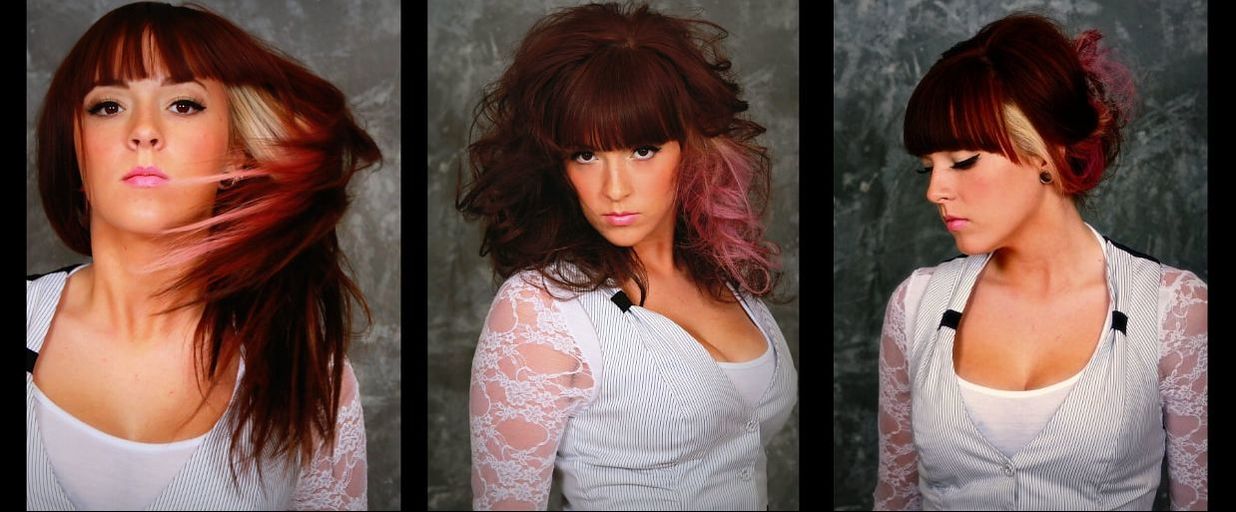
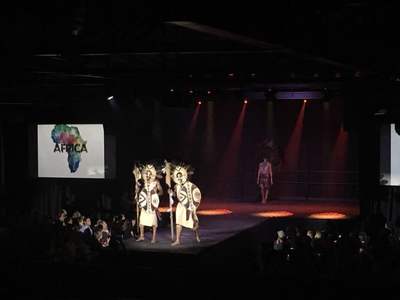
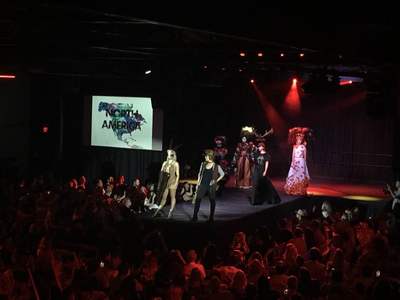
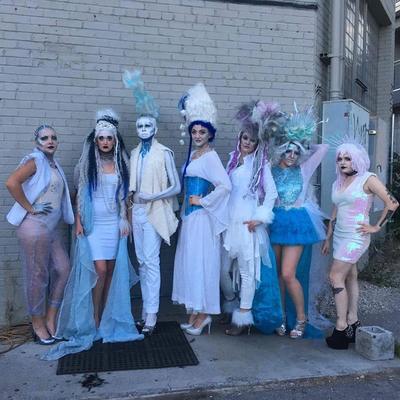
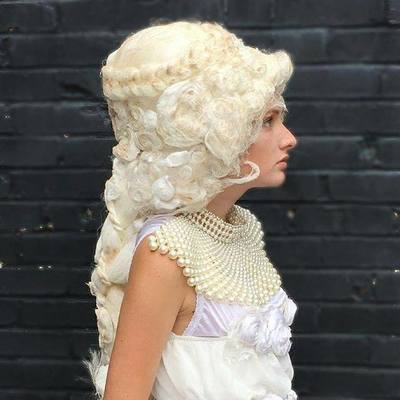
 RSS Feed
RSS Feed
